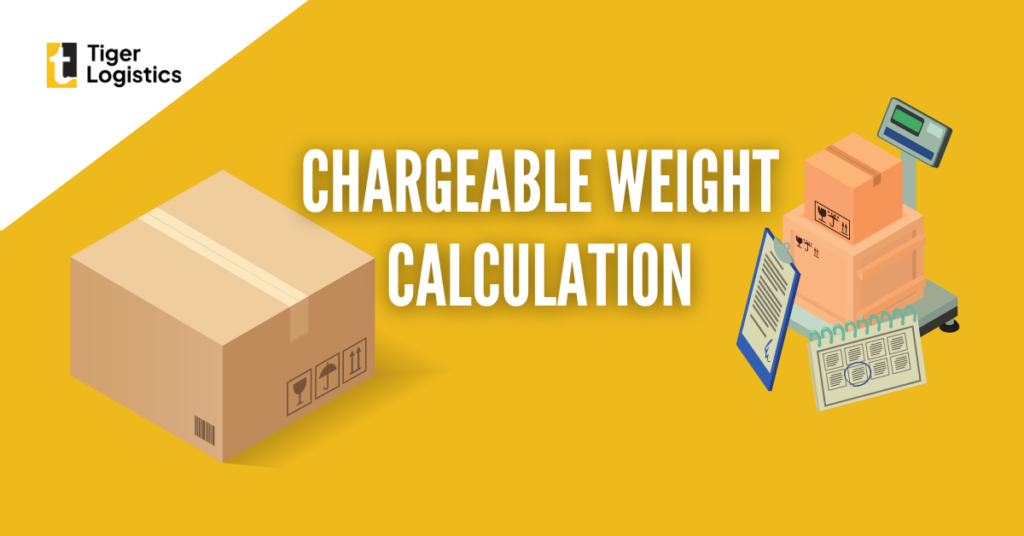
What is chargeable weight in air freight?
Chargeable weight is the weight used by airlines to determine freight charges for a shipment, based on either the actual weight or the volumetric weight, whichever is higher.
What is volumetric weight?
Volumetric weight, also known as dimensional weight, is calculated using the dimensions of the package rather than its actual weight. It reflects the amount of space the package occupies in the aircraft.
Why is accurate calculation of chargeable weight important?
Accurate calculation ensures fair pricing for shippers and helps airlines optimize their cargo loads, minimizing disputes, extra costs, and operational inefficiencies. Click here to calculate chargeable weight for Air Freight.
What is the best method for calculating chargeable weight?
The most efficient method is the volumetric weight calculation, which involves measuring the package dimensions, calculating volume, converting to cubic meters if necessary, applying a conversion factor, and comparing the result with the actual weight.
How can I streamline the chargeable weight calculation process?
By understanding the volumetric weight calculation method and following the steps outlined in this article, you can simplify the process and avoid unnecessary disputes with airlines.
In the realm of air freight, determining the chargeable weight of shipments is paramount. This metric serves as the basis for calculating transportation costs and demands a clear comprehension from shippers. In this article, we’ll unravel the intricacies of chargeable weight calculation for air freight and present the most effective methods to ensure precision and efficacy.
Understanding Chargeable Weight:
Chargeable weight denotes the weight used by airlines to compute freight charges. It’s derived from either the actual weight of the shipment or the volumetric weight, whichever is greater. Volumetric weight, also dubbed dimensional weight, is calculated based on the package’s dimensions. The formula for volumetric weight varies, contingent upon the unit of measurement and carrier-specific guidelines. Still feeling confused Checkout our Digital Freight Management Platform- Freightjar.
The Importance of Accurate Calculation:
Accurate chargeable weight calculation is pivotal for both shippers and airlines. For shippers, it guarantees fair pricing based on the space their cargo occupies. Airlines, on the other hand, rely on precise calculations to optimize cargo loads and maximize revenue. Erroneous calculations can lead to disputes, additional expenses, and operational inefficiencies for both parties.
The Best Method for Calculating Chargeable Weight:
Numerous methods exist for calculating chargeable weight in air freight shipments. However, the volumetric weight calculation stands out as one of the most widely accepted and efficient approaches. Here’s how it operates:
- Measure the Dimensions: Begin by measuring the length, width, and height of the package, adhering to the carrier’s requirements.
- Calculate the Volume: Multiply the length, width, and height to determine the package’s volume.
- Convert to Cubic Meters: If the carrier’s formula necessitates cubic meters, convert the volume accordingly.
- Apply the Conversion Factor: Utilize the carrier’s conversion factor to convert volumetric weight to kilograms or pounds.
- Compare Weights: Finally, compare the actual weight with the volumetric weight; the higher of the two is deemed the chargeable weight for billing.
Example Calculation:
Let’s illustrate the volumetric weight calculation with an example:
- Dimensions of the Package: Length = 50 inches, Width = 30 inches, Height = 20 inches
- Actual Weight of the Package: 25 kilograms
- Conversion Factor: 1 cubic meter = 167 kilograms (for illustration purposes)
- Calculate the Volume: Volume=50″×30″×20″=30000 cubic inches
- Convert to Cubic Meters: Volume = 61023.7 cubic inches per cubic meter/30000 cubic inches =0.492 cubic meters
- Apply the Conversion Factor: Volumetric weight=0.492 cubic meters×167 kilograms/cubic meter=82.164 kilograms
In this scenario, the volumetric weight (82.164 kilograms) exceeds the actual weight (25 kilograms), thus becoming the chargeable weight for billing purposes. Checkout our Blog for More Information on Air Freight.







